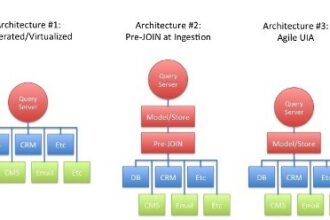Compromised files and data is something we don’t tend to worry about much these days. Backup to the cloud and other forms of remote digital information storage have us accustomed to the data always being there, somewhere.
Sometimes, however, this isn’t the case. Plenty of critical, crucial data for individuals and businesses wind up existing solely on local drives and unremarkable servers. When damage strikes it can seem as though decades of family pictures and videos, or thousands of client records, are gone forever.
Fortunately, this is not always the case. In fact, software exists solely for the purpose of coming to the rescue in the salvaging of seemingly lost file types and databases. Here are eight examples of what can potentially be rescued in the event of a local drive error:
SQL Databases
Businesses used to database management systems are easily crippled if the house comes crashing down. However, not is all lost. Software exists to tackle SQL data recovery and get companies back on track with their multitasking ways.
Photoshop Files
That’s right – all those unrendered unfinished projects along with the folder of completed masterpieces can be saved. It’s a web of files and file types, but the software is specifically geared toward the untangling and reconnecting of these seemingly lost works.
PowerPoint Files
The big presentation due tomorrow was saved on the home hard drive and your kid’s misguided indoor soccer ball kick struck the computer right where it hurts. Never fear – there is hope for recovery. Just in time for that promotion.
Oracle Databases
Database deletion or some other form of catastrophic compromise is not the death sentence it used to be even three years ago. Developers have spent an extraordinary amount of time building recovery tools for Oracle based systems.
Lotus Notes Files
“It’s an older code sir, but it checks out.” Lotus Note users may be few in number but they can be comfortable in knowing there is a recovery option when things go bad. The software is still around to support salvage efforts, getting companies and self-employers back on track.
OneNote Files
You guessed it – the rescue of files associated with Microsoft’s note taking software is achievable. This is particularly handy for the growing number of companies functioning in a remote form with workers scattered across several locations at any given moment.
Corrupted Pictures
It sounds like a scene from CSI or Forensic Files but repairing corrupted image files is doable with the right software. For families with decades of pictures stored digitally, this tool can be more than convenient, it can rescue a treasure of memories.
Flash Files
Adobe Flash is another platform with more users than you might expect. For developers dependent on Flash, a potential loss of data can be a professional disaster, making recovery tools a proactive investment worthy every penny.
Melding Technologies
According to industry pros, data quantities are doubling every two years. Handling this amount of information is a major challenge for any company. It’s not only the data volume that’s causing problems, but it’s also the data variety that’s an issue. When companies use icloud unlock hybrid integration, they may find it easier to manage their overabundance of data.
Responsible data management is always important. Preventing security breaches and backing up files is first and foremost on the list of necessary measures in store. Yet they don’t protect against every element risking data security. In the event programs, databases, and platforms are damaged, the software is there to get them back up and running. It’s a matter of having the weapons on hand for immediate response, or having to go gather them when the time comes.







